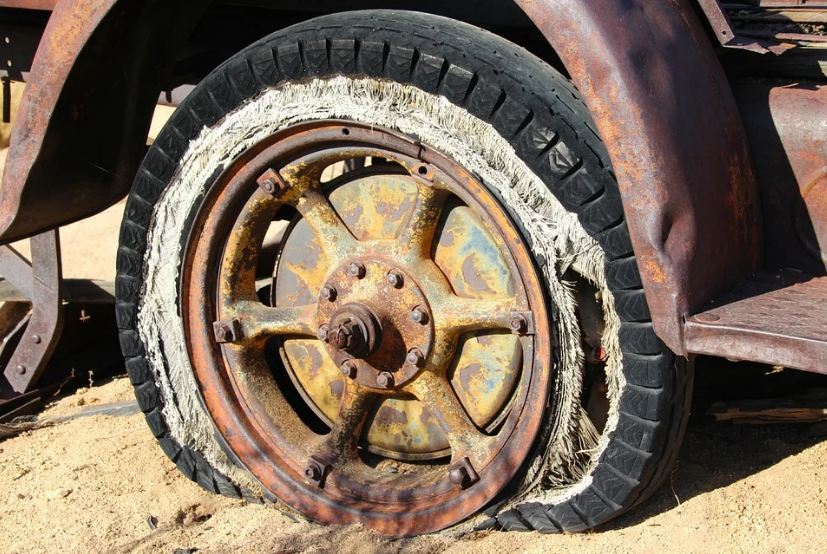The tires of your car are some of the most important parts that you would need to inspect and maintain regularly. Because they are the parts that come into contact with the surface the most, tires are usually prone to damages, especially when you are driving off-road or in rough terrains and uneven roads. So, it is best to perform a checkup on your tires to see if they need repairs or replacements.
Most of us want to save as much money as possible when it comes to our cars, like saving on gas or spending less money on repairs. However, by being skimpy on our cars, it would often result in bigger problems that could have been resolved years or months before. One of the parts that are typically neglected by some drivers or car owners is the tire. As we have discussed earlier, tires can easily be damaged, and if they are not taken care of, they will ultimately cause irreparable complications and even accidents. To know more, here are some of the biggest dangers of using old and neglected tires.
Deterioration of Parts
Aging is a big factor that should be considered when replacing tires, as old tires often have materials that would suddenly fall off or separate from the outer and inner layers of the tires. If you continue using old tires, your wheels will not be cushioned enough and may eventually get damaged too.
Once you notice big cracks or material separation from the tires, you should have been able to replace those months ago. If there are bulging spots and small cracks found in the outer layer of the tires, then it is time to get them replaced at an auto repair center.
Can Easily Be Punctured
New tires are much more durable since the material used for them are still fresh and are blemish-free. However, after a few years, those tires’ materials will degrade and will become softer and less durable, so they are more prone to getting punctured by sharp objects.
The puncturing of tires is arguably one of the most dangerous occurrences that can happen to your car, as one of the tires will suddenly lose air and will be unable to get proper balance with the other tires. A flat tire could lead to accidents, so before that can happen, it would be best to get new tires once every five years.
Worn Treads
The treads found in the outer layer of the tires are what provide your vehicle grip and traction on roads. Without the treads, your vehicle will get slippery, especially on rainy and snowy days where the roads often get wet. Because old tires have been used for thousands of miles of driving, their treads would get worn out until there is only a little left. Once the tires’ treads wear out, we recommend that you get them replaced immediately.
To check if the treads of your tires are still functioning efficiently, you can purchase a tread level indicator or gauge, which is a device that can get you accurate measurements of how tall tire treads should be. Treads should be at least 2/32 inches or 0.16 centimeters for them to have sufficient traction on the road. If the treads’ height goes slightly below the said measurement, almost all car experts would tell you that you need to replace that problematic tire immediately.
Weak Brakes
Because old tires can be slippery on roads, your vehicle may have a difficult time braking efficiently since the slippery tires can make the wheels move forward a little bit more even after you hit the brakes. This scenario can be quite dangerous, especially if you are driving through an accident-prone area that has many turns and curves.
Slippery tires can also damage or weaken your brakes over time, as the brakes need to be overworked in order for your vehicle to stop completely if the tires aren’t cooperating. Always check the treads of your tires to ensure that you won’t have a difficult time driving your car.
Bursting Tires
Using very old tires can lead to tire bursts, which occurs when the tires cannot carry their intended air pressure anymore because of deteriorating and softening materials. Tire bursts are very dangerous, so it is always recommended to get your tires inspected regularly to know if they need to be replaced.
Tire bursts can be prevented if you can already see some signs of aging on the tires, one of which is bulging. Tire bulging appears when the outer and inner layers of the tire turn too soft that air pressure gets stuck between them, thus causing a small portion of the outer layer to bulge upwards. Bulging in tires could result in various issues like flat tires, punctures, and, as previously mentioned, tire bursts. Tire bulges cannot be fixed, so tires that have this problem should already be replaced.
After reading this article, we hope that we helped you have better decisions when it comes to maintaining and replacing tires. By taking care of your tires and replacing them after five to six years, you will greatly improve your vehicle’s safety and performance.


